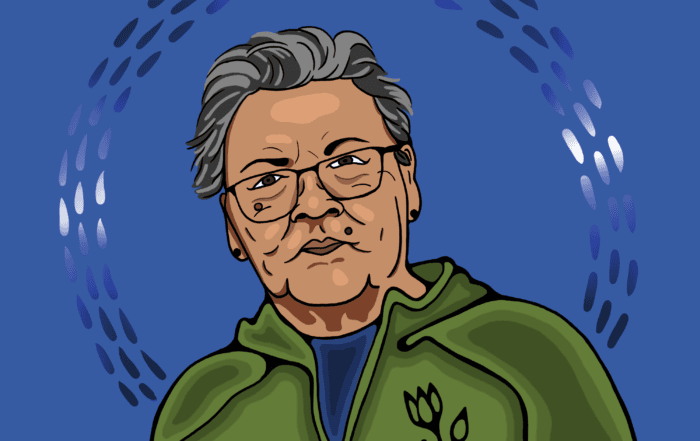EPA implements new standards for “forever chemicals” in drinking water

Photo: Manu Schwendener (Unsplash)
Per- and Polyfluoroalkyl Substances (PFAS) have been a source of concern for environmental advocates for decades. These chemicals are commonly used in a wide variety of products including:
They are commonly known as “forever chemicals” because they do not break down in the environment, can move through soils and contaminate drinking water sources, and bioaccumulate in fish and wildlife. These substances have been linked to a variety of health effects including increased cholesterol, lower antibody response, certain cancers, and pregnancy complications.
Last week, the United States Environmental Protection Agency (EPA) announced the establishment of the first-ever nationwide, legally enforceable drinking water standards to protect communities from six PFAS chemicals in their drinking water. While these new standards have been applauded by some, others argue that the regulations don’t go far enough or that they come too late.
Recently, a community-led testing effort showed PFAS levels as high as 7,900 parts per trillion in Lake Huron beach foam. “If you see foam on the beach itself, you should not swim that day,” said Cathy Wusterbarth, an Oscoda resident who leads the group Need Our Water. “that foam is toxic.”
“We felt gaslighted when they told us the foam was a ‘natural’ type of foam, so we tested the foam ourselves,” said Wusterbarth. “We found there is nothing natural about the PFAS foam in Lake Huron.”
The impact of PFAS expands beyond beach-goers, with similar findings raising concerns about the safety of consuming fish in highly polluted regions of the lakes. “It’s an emerging contaminant, so the science is evolving monthly, daily in some cases,” said Brandon Reid, a toxicologist with the Michigan Department of Health and Human Services who is reviewing the science behind its PFAS “do not fish” advisories.
Indian voices absorbed into the body poli-tongue

Photo: Guillaume Jaillet
“Our object is to continue until there is not a single Indian in Canada that has not been absorbed into the body politic, and there is no Indian question, and no Indian department, that is the whole object of this Bill.”
-Duncan Campbell Scott, deputy superintendent of the Department of Indian Affairs from 1913 to 1932 on the Indian Act
In March of 2024, Ontario’s Government House Leader Paul Calandra moved to amend the chamber’s Standing Order 24(A) to allow members to speak “an Indigenous language spoken in Canada” to the chamber. The motion was carried, signifying progress – on a provincial level – toward the Truth and Reconciliation Commission’s Calls to Action 13 and 14, two of the five calls that relate to protecting Indigenous languages.
Of the 450-plus languages estimated to have been spoken at the advent of colonization in what would become Canada, 70 remain today. The steep decline is due to the planned extinction of Indigenous languages through Residential Schools, assimilative policies and the forced learning of English and French.
Sol Mamakwa, Kiiwetinoog MPP said, “Here in this building, the standing orders up until today have said every member desiring to speak must rise in his or her place and address the Speaker in either English or French.” It was a form of continuing assimilation in the legislature.
While all Indigenous languages in the Great Lakes are endangered, more people are being empowered to revive their ancestral languages in their own communities, in schools and now in the Legislative Assembly of Ontario.
To learn more about the original languages of this land and those who carry them, check out our Spoken back to life series.
Twenty- four- year Great Lakes fishing decree takes effect

Photo: Alan Bishop
A deal to split up the next twenty-four years worth of fishing access in Michigan’s Great Lakes waters among the Bay Mills Indian Community, the Grand Traverse Band of Ottawa and Chippewa Indians, the Little Traverse Bay Bands of Odawa Indians, the Sault Ste. Marie Tribe of Chippewa Indians and the Little River Band of Ottawa Indians, as well as the federal and state governments, is now in effect.
The decree grants tribal anglers access to new fishing locations, use of gillnets and an extended allowance to harvest new species in response to the dramatic drop in whitefish populations.
Recreational and charter boat groups worry these expansions to gillnet fishing could threaten the lakes’ fisheries and negatively impact their livelihoods.
Gillnets are walls of submerged netting that are set to ensnare the gills or other body parts of fish that swim into them. Compared to trap nets, where unintended catch known as “bycatch” can be tossed back alive, gillnets are generally lethal.
Michigan spent millions of dollars buying out tribal gillnet operators and converting to trap nets when tribes and the state adopted the previous decree in 2000.
“When the 2000 decree was signed, no one could have foreseen that the influx of zebra and quagga mussels was going to severely undercut the amount of whitefish that could survive in lakes Huron and Michigan,” said Kathryn Tierney, tribal attorney for the Bay Mills Indian Community. “And guess what? It’s not obvious how to fix it, either.”
Dave Caroffino, DNR Fisheries Division Tribal Coordination Unit manager said “Tribal fishing regulations needed to be updated to ensure they are consistent with the changes outlined in the new decree. In addition, both the state and the tribes have been preparing electronic reporting systems to improve data collection from commercial fishers, wholesale fish dealers and charter captains.”
Information gathered from fisheries is vital to making management decisions and will be used by the state and the tribes to monitor fish populations and establish regulations in the future.
Nick Torsky, a supervisor within the DNR Great Lakes Enforcement Unit said “anglers may see nets in locations they are not used to. It is important to review the updated maps within the decree to understand where commercial fishing nets may be located. Being careful and vigilant for commercial fishing nets while on the water is critical to public safety.”



